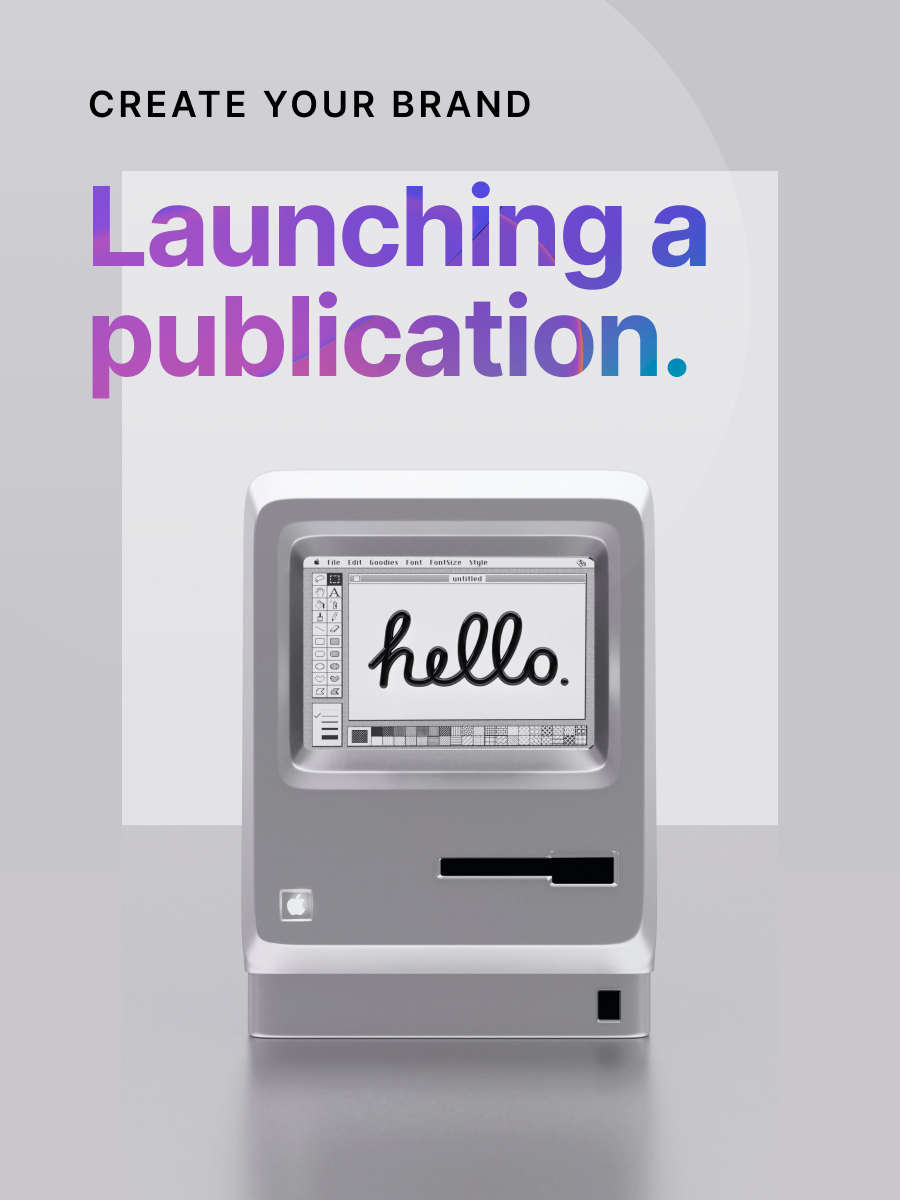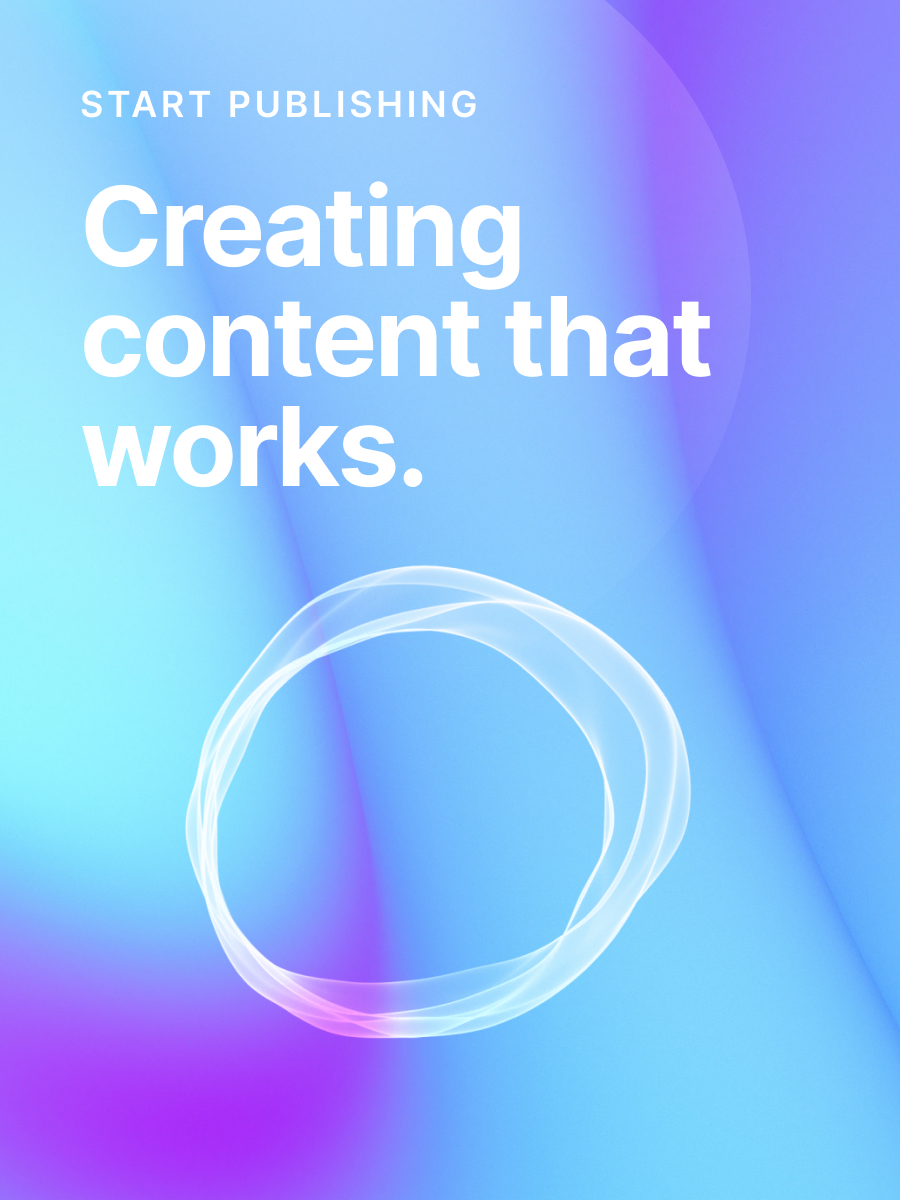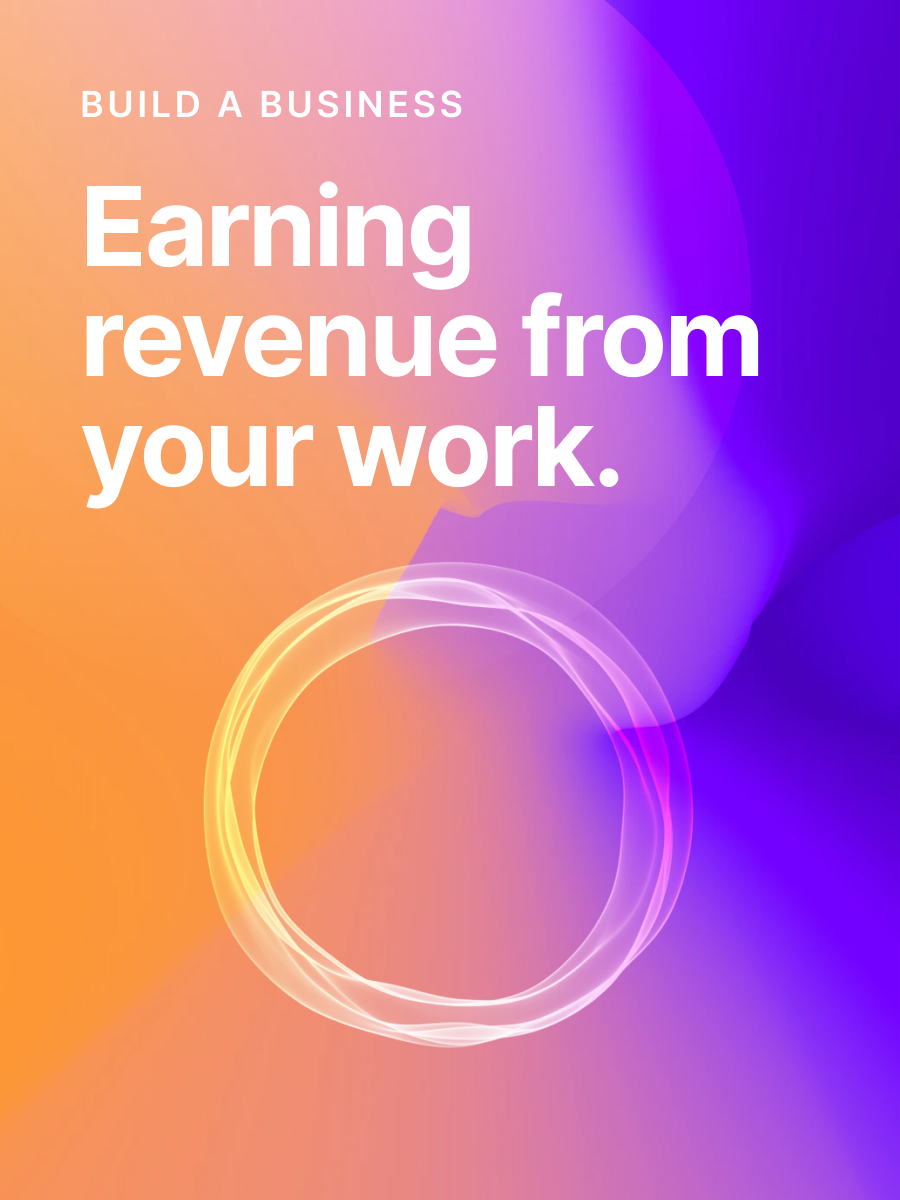How to create a premium newsletter (+ some case studies)
The humble email newsletter is evolving with a new business model. Enter the premium newsletter.
A premium newsletter is a subscription business that generates sustainable recurring revenue by sending unique content to its members via email.
A growing number of online publishers are relying on email newsletters to build an audience of paying subscribers which can generate thousands or even millions in annual revenue.
This article includes successful examples of newsletter subscription businesses — before exploring everything you need to know to start your own.
Case studies
There are plenty of interesting examples of premium newsletters in a variety of niches that are already paving the way, which helps to highlight some of the key factors that make them so successful. Here are 11 examples to provide further insight and inspiration.
Stratechery pioneered the daily premium newsletter
Ben Thompson is one of the early adopters of the premium newsletter model. Members can enjoy the analytical tech industry blog posts and daily newsletters by subscribing for a monthly or annual membership. While some of the content on the site is free, thousands of people have subscribed to support Ben’s work and access the daily email newsletter.
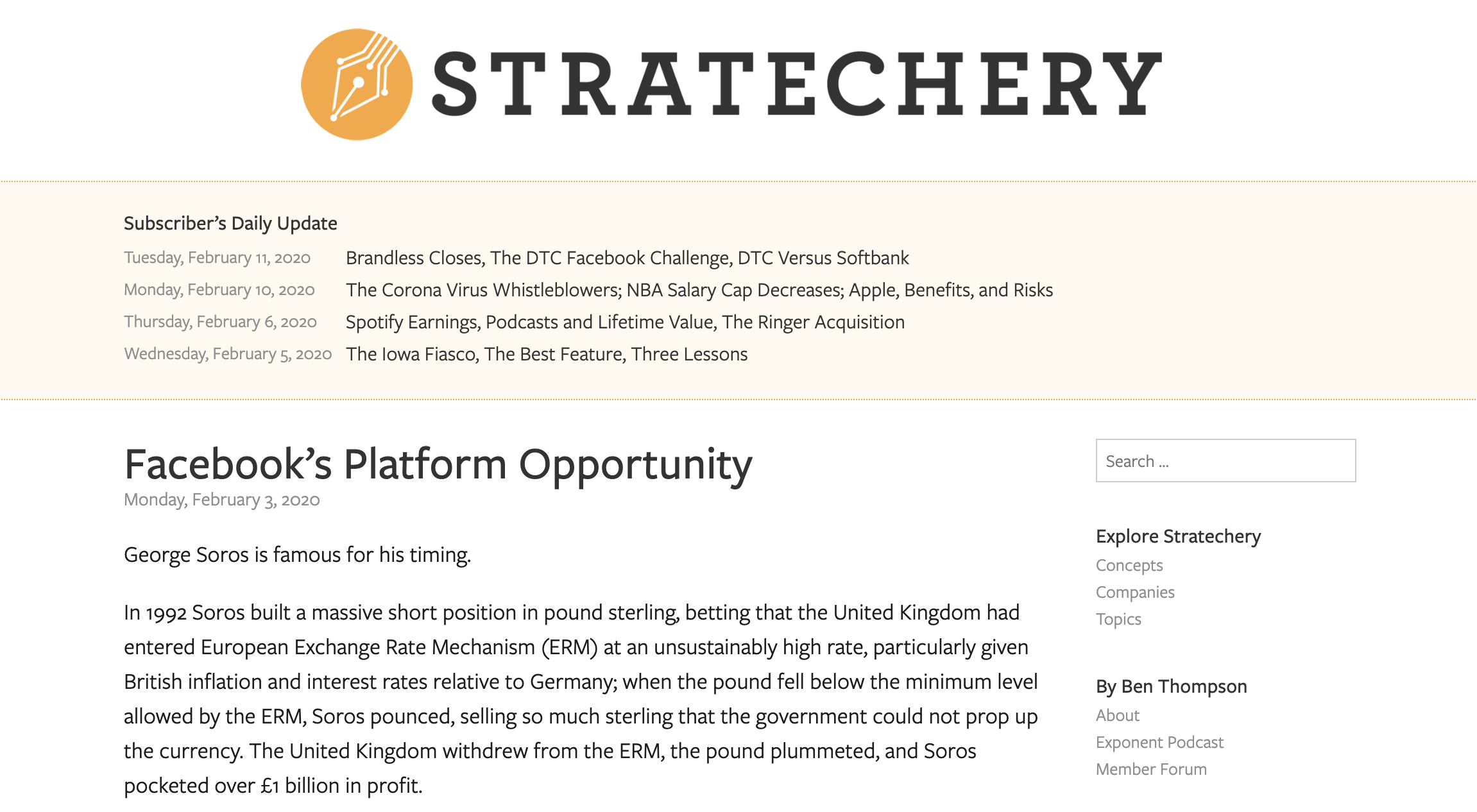
The Browser has over 10,000 subscribers
This newsletter curates 5 recommended articles from a variety of topics every day for its subscribers, and is entirely run by two editors, Robert Cottrell and Caroline Crampton. Monthly subscriptions start at $5, with annual subscriptions starting at $48. Read more about The Browser’s story in this interview.
Side-project Normcore Tech generated $4k in the first few months
Tech writer Vicki Boykis started a newsletter as a side project and quickly began attracting subscribers and revenue within the first 5 months.
“From my personal perspective, it’s more than I’ve ever made writing in a year consistently, and I keep getting new subscribers, so I’m pretty happy with it.”
De Correspondent generate millions with a successful hyperlocal newsletter
96% of the Dutch publishers' revenue comes from paying members who sign up for the daily newsletter. Memberships are €7/month or €70/year, but they also receive nominated donations and additional support from members who can afford it.
They’re well known for being transparent about their revenue with members, which helps to foster engagement and retention.
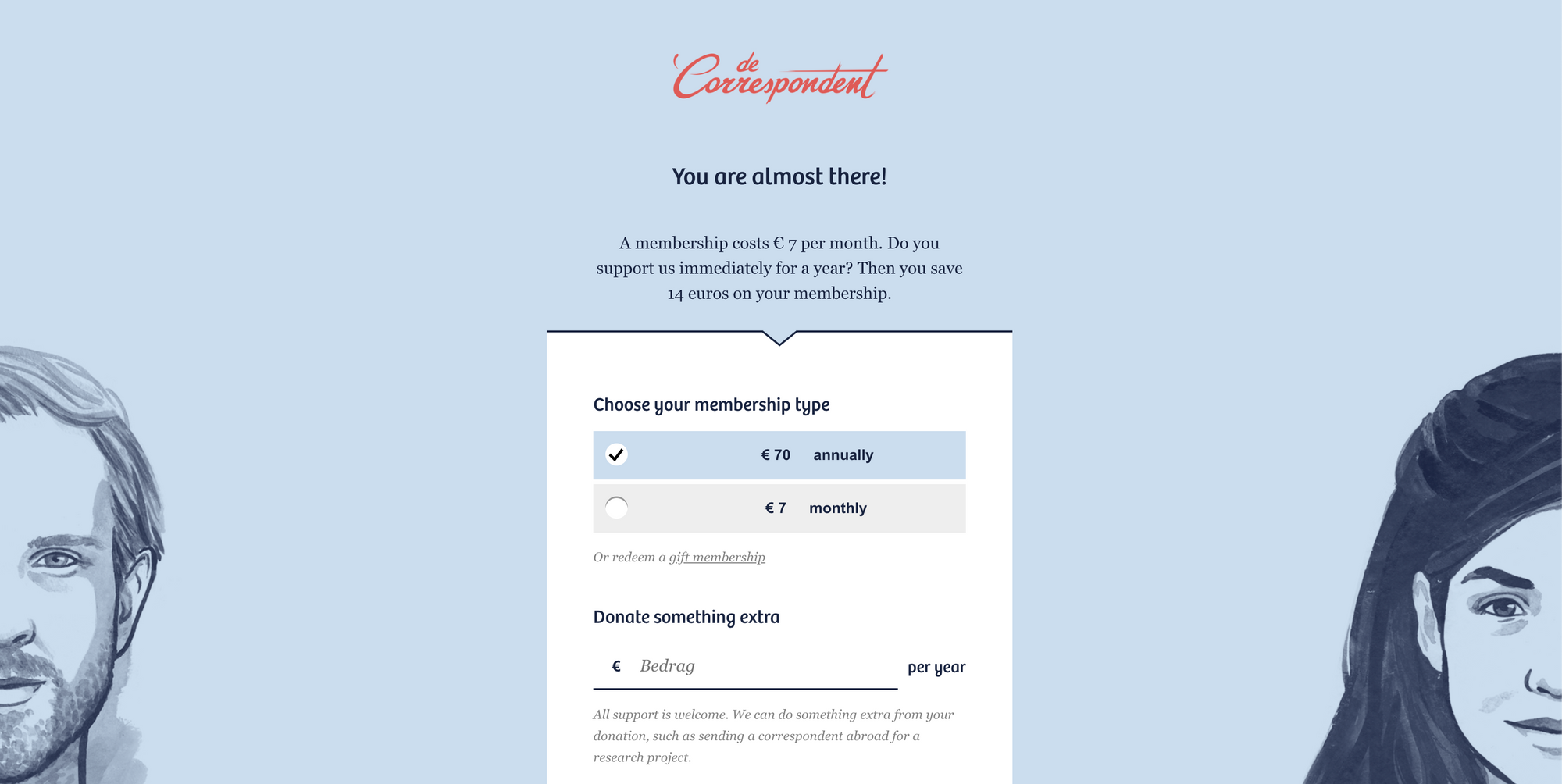
Sinocism now has more than 50,000 subscribers
This informative newsletter by Bill Bishop is about business, political and social relationships between China and the U.S. With over 50k subscribers in total and premium members are paying $15/month.
Larger media organizations like Business Insider are moving towards premium subscriptions
Business Insider was acquired by large media company Axel Springer in 2015, and has been selling premium newsletter subscriptions for several years. BI Prime and BI Intelligence subscriptions have $1 “free” trials, annual membership and even enterprise options.
Rediverge sold out of limited early adopter spots in 24 hours
This independent publication about remote work, world travel and building a different kind of life was launched by Ghost’s founder John O’Nolan in November 2019. Rediverge is now a few months into building a growing community of more than 250 subscribers who receive the private newsletter in their inbox.
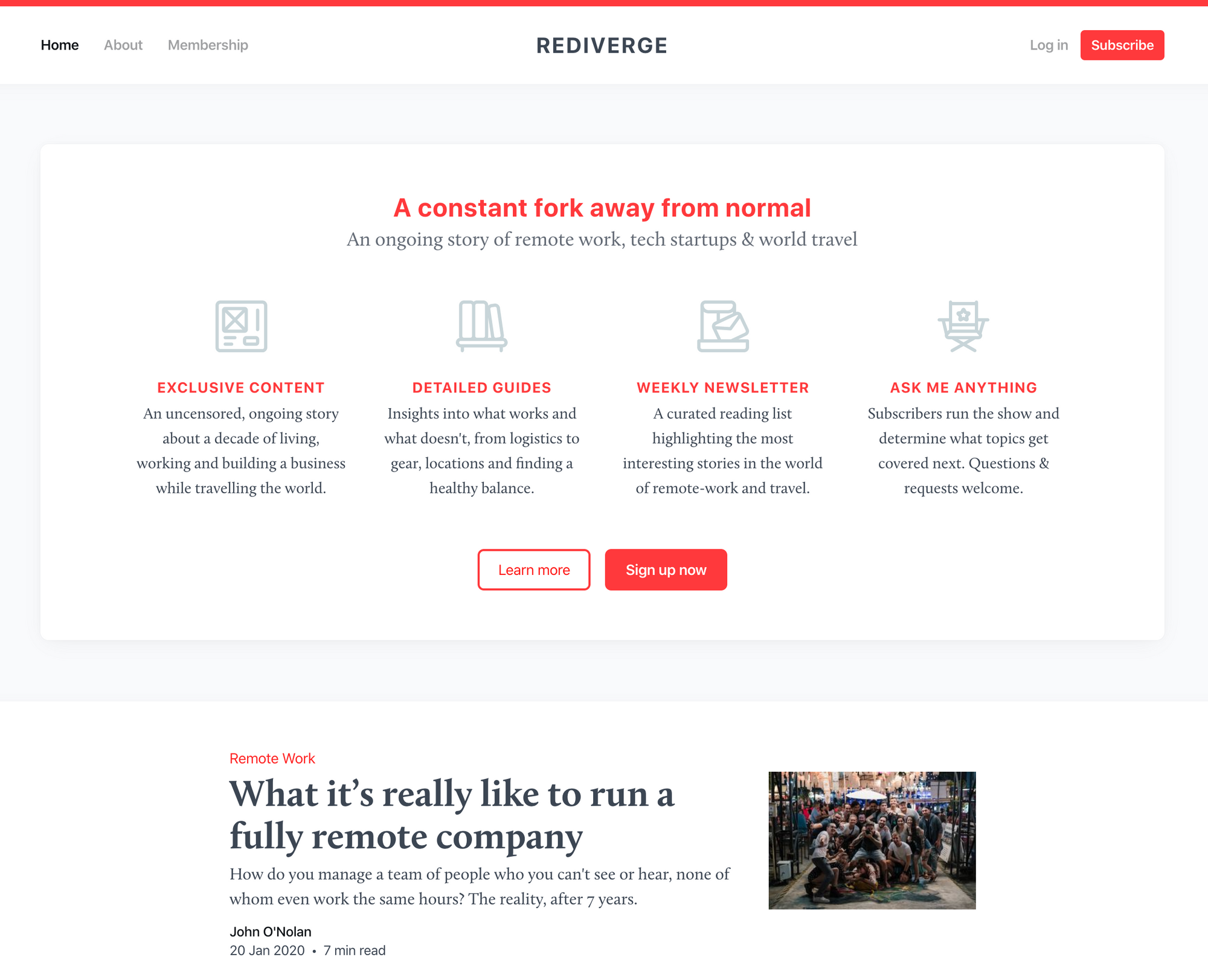
Off the chain provides a daily newsletter to investors and early access to podcast episodes
Anthony Pompliano’s cryptocurrency newsletter sends both free and premium issues, with a “daily letter” for paid members. It already has more than 40,000 subscribers (free and paid) and starts at $100/year or $10/month.
Jessica Lessin founded The Information with subscriptions as the only revenue stream in 2013
Since then the publication has gone on to become very successful, with a free weekly newsletter, and daily news analysis for paid members. The Information members also get access to a whole host of other member benefits like exclusive articles and access to a Slack community. The Information has a $399 annual plan which thousands of subscribers pay for!
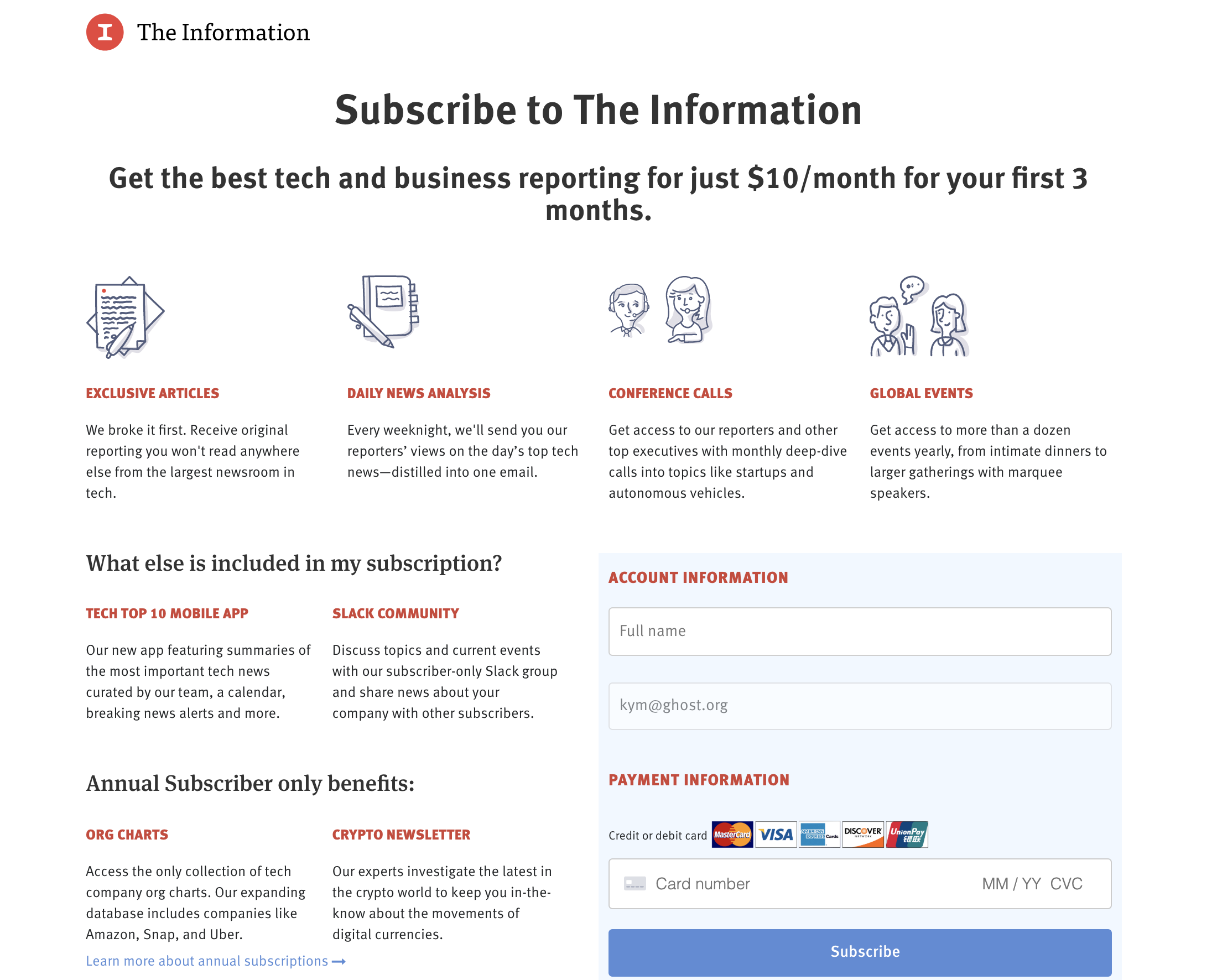
Advisorator generated more than $12k within the first year
Freelance journalist Jared Newman ran a free newsletter for two years, and noticed there was a demand for something more focused on tech advice. So Advisorator was born, which has $5/month and $50/year subscriptions, and attracted 200 subscribers in the first year.
“Nothing compares to the freedom of running your own publication, in which people have invested specifically in hearing what you have to say”
— Jared Newman
Explorers Club gained over 15,000 subscribers in the first year
Craig Mod runs two newsletters, Roden and Ridgeline, alongside a membership business that boasts other benefits like longform essays, office hours and podcast content.
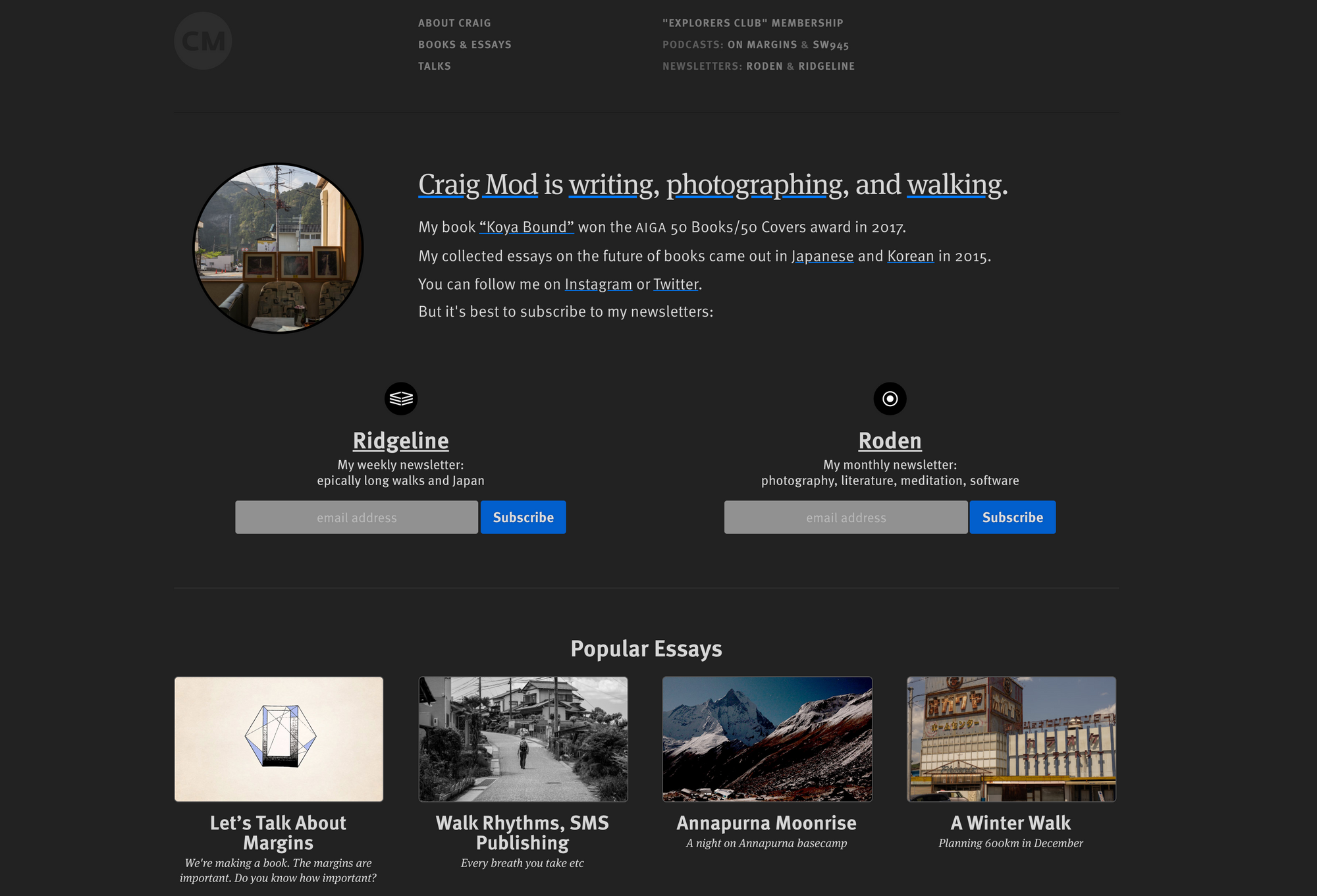
These examples include solo creators, smaller independent publishers, and larger publications with a team behind them. But what is interesting is that the size of the organization doesn’t necessarily correlate with its success. It’s entirely possible to generate large amounts of sustainable revenue and run a full membership business as a writer, creator, or solo founder. Equally, this business model works well for publishing teams at scale.
Why use email and not something else?
Trends come and go, but email is never going away. It consistently performs above all other mediums and has done for a long time.
With over 3.9 billion email accounts worldwide and 306 billion emails sent per day, average open rates for email are between 20%-30% and click-through rates are around 3%. This might not sound that great, but compared to other channels like social media, where average reach is 6% or less and click-through is 0.5%, it actually stacks up pretty well (Source).
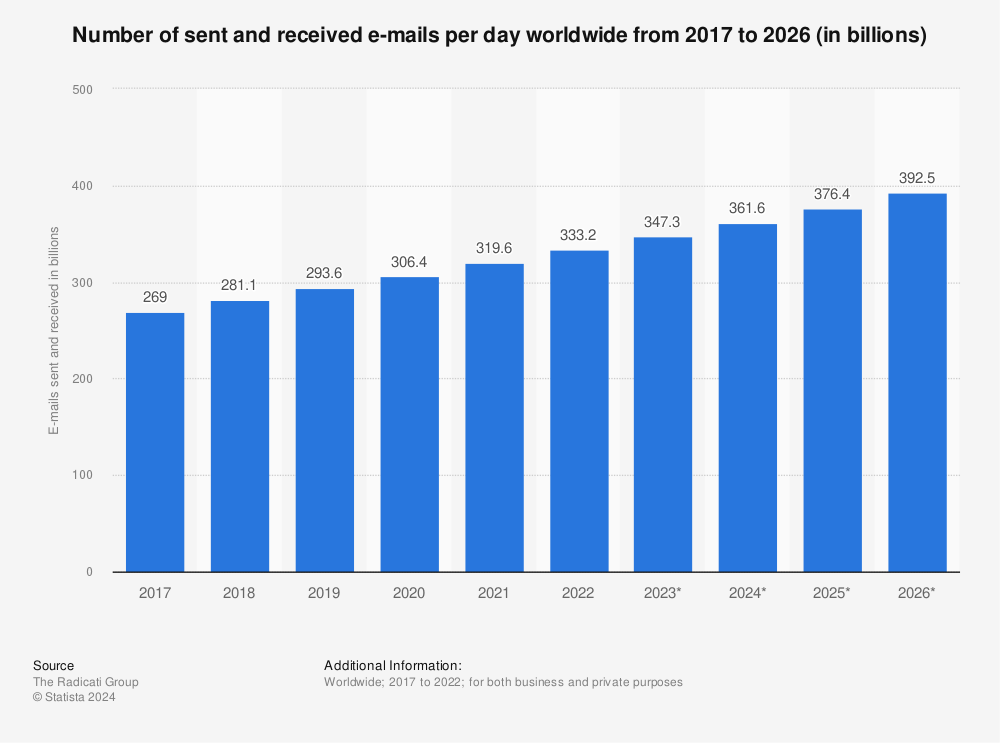
Not only that, premium newsletters are far more likely to exceed the averages since they're not cold marketing emails being sent to a large audience, but targeted emails being sent to a niche audience who are paying to receive emails.
Social media networks are saturated, advertising models are broken and the internet is full of spam, bots and tracking. Consumers are getting tired of this, and increasingly searching for alternative ways to discover the best content that serves their needs. This is where a paid newsletter comes in!
Niches are becoming big business
Creating a premium newsletter gives you the opportunity to cut through the noise. You can find a niche and attract a very specific audience. Your audience is made up of people who make the choice to sign up for your newsletter. They actually want to hear from you, and hopefully in some cases will be willing to pay for that benefit. Email is the most effective and direct way to share your work with these people.
You can still use other formats, too
A newsletter is a vehicle for communication that works well. But you can also combine or coincide a newsletter with a blog, a community, a podcast, a video channel, essays, photography, music… or anything else you can think of. Many of the case studies above do exactly this!
How to create a newsletter
Now we know what a premium newsletter looks like and have seen examples of what success looks like, let’s dive into how to create a newsletter for yourself. We’re going to start with some initial tips for finding your niche, the technical specifics of getting setup, and methods for attracting your first subscribers.
Step 1: Find your niche
For any kind of premium content to work, it needs to be genuinely unique. Asking questions such as “what am I interested in?” or “what am I an expert in?” is a good start, but what you really want to spend time figuring out is: How you are going to offer something that people want or need, and simply can’t find elsewhere? The more specific you can be about this, the better.
Uniqueness can take many forms, here’s some examples:
- Provide value — For example, a curated newsletter saves time, an analytical one teaches readers something, a business tips newsletter enables readers to make better business decisions. In a lot of these cases, the newsletter also helps people to make money which is usually the most convincing justification for a subscription of any kind.
- Fill a content gap — When there are simply no good outlets providing curation or information to those who want it the most you have a prime opportunity to create something of unique value. These are rare to find!
- Provide a unique perspective — Creating a newsletter that provides your own perspective on a niche topic that is already saturated can work, but it usually requires having an existing audience to work with.
- Provide entertainment — Arguably the most difficult space to be in, since entertainment is subjective which makes it more difficult to set yourself apart. But that doesn’t mean it’s not possible. There are many popular YouTubers for example, whose main value proposition is pure entertainment.
What is your value proposition? Remember, you’re expecting people to pay for your newsletter. Providing unique value is something that all successful businesses have to figure out. People selling physical products or software have to overcome the exact same hurdles!
The good news is – many of the successful newsletter authors featured earlier in this article didn’t start out as well-known names within their niche. They’ve built a brand using their newsletter to become well-known. They did this by figuring out a genuinely unique approach within a specific niche and started consistently creating exceptionally good content. That’s what you need to do!
Further reading: The unexpected (but proven) way to find your niche
Step 2: Build your platform & start publishing
Once you’ve got an initial strategy in place, you’re going to need a subscription commerce platform to host your premium newsletter. The bare minimum you’ll need to get started is:
- A page where people can subscribe
- A way to take payments
- A method of sending email newsletters to subscribers
Creating a paid newsletter website
This may sound daunting if you've never built a website before or don't have any coding skills, but there are now plenty of beginner-friendly options, including ours, that make this entire process achievable in a short space of time. The choice is yours, so make sure you do some research and experiment to get an idea of what tools work best for you.
Newsletter authors can get started with Ghost by spinning up a publication in the space of 3 clicks, which immediately gives you a website that you control, as well as full premium newsletter features including sign-up and sign-in forms, plans, and payments via Stripe and member management.
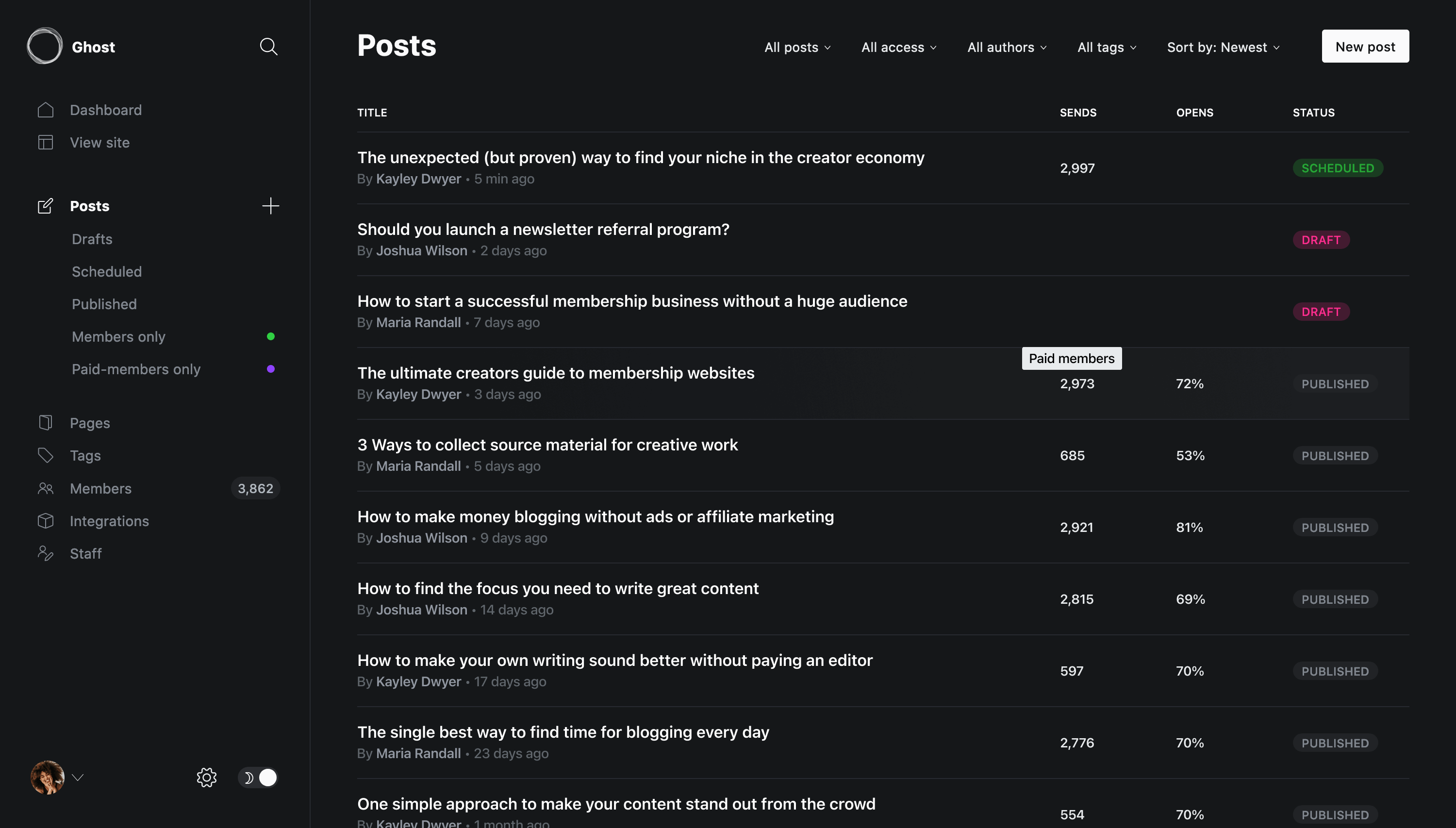
Creating subscriptions & taking payments
Once your premium newsletter has a home, it also needs to accept payments from subscribers. The most common way to do this is to have a sign up page or modal featuring paid plans, which allows readers to subscribe with a credit card.
Any good subscription commerce platform handles this for you using an integration with a payment gateway. The thing to research here is whether there are any additional fees or percentages taken out of your revenue, as this varies depending on your chosen platform.

This works in Ghost by connecting a Stripe account that you own, and using the portal widget to run the signup forms. That's all you need to start taking payments, no code required. Once a new member has subscribed, they'll be added to the member dashboard and receive all future emails.
Sending newsletter content
You may decide to use a platform that has email newsletters built-in, like Ghost or Substack, or use something like Memberful that manages memberships, but requires an additional tool for emails. Either way, you need to choose a reliable mechanism for sending newsletter content to subscribers.

Any post created in the Ghost editor can be sent to subscribers in a few clicks and it's possible to send emails to both free and/or paid subscribers based on post access level. For example, you might choose to send daily newsletters to paid members, and weekly issues to free members.
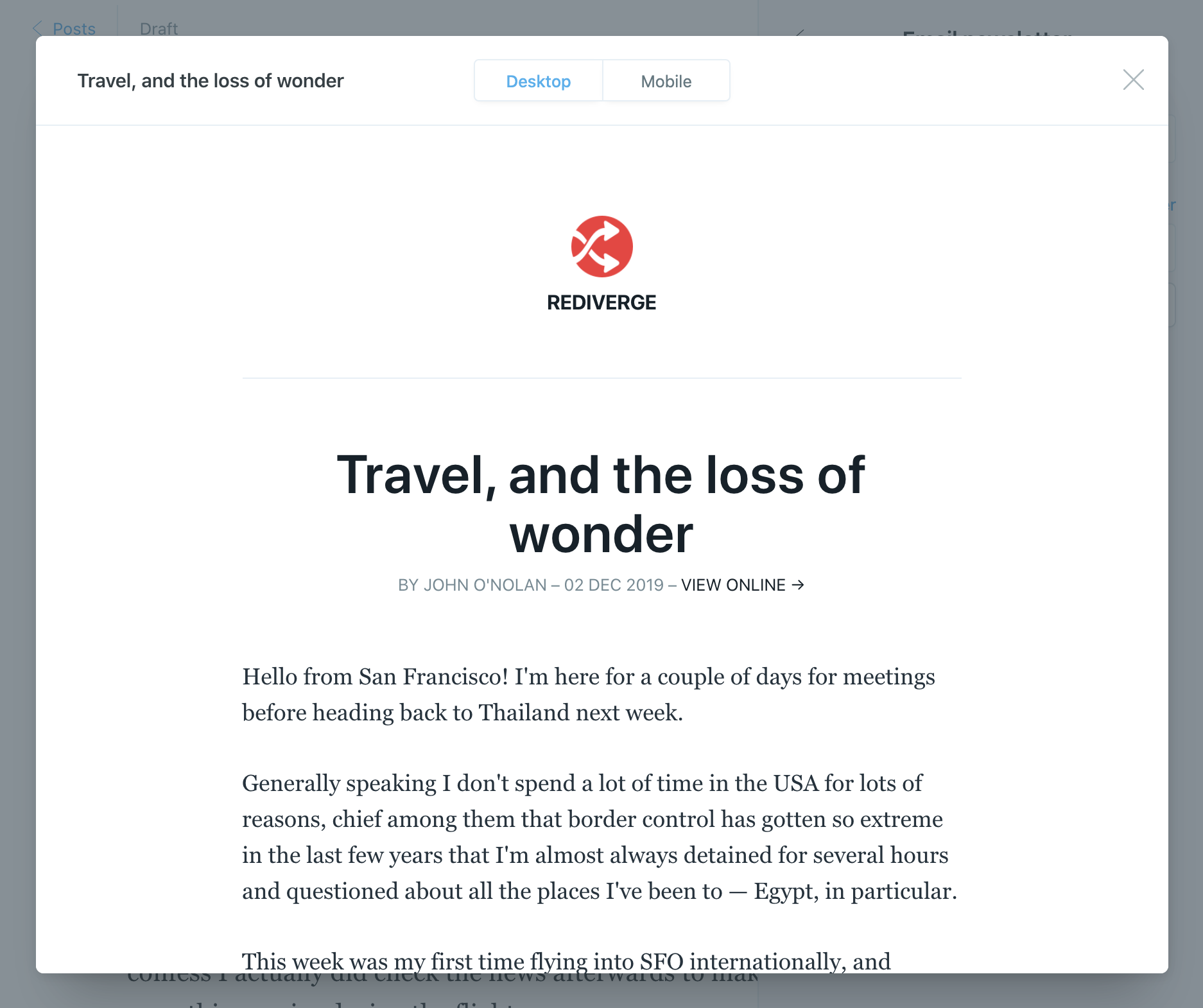
Doing more than the basics
Beyond that, you’re probably going to want some additional functionality, including but not limited to:
- Custom domains
- A custom branded website
- Member-protected content
- Member management dashboard
- Integrations with third-party tools
- Content embeds for video and audio
It's always a good idea to plan for the future when deciding what technology to use to power any business. All of the successful case studies earlier in this article have built something fairly custom and are offering a variety of perks and content types to their members, which helps them to grow and retain their members.
Ghost leaves you with open avenues to customize, scale, and personalize your membership site down the line. Most publishers choose to start simple and then do the customization work once their proof of concept is working and they're generating some predictable revenue.
Running costs 💸
Craig Mod covered the ongoing costs to run this type of business in an article about running a membership program. It gives you an idea of the kind of things you need to consider, such as hosting, domains, email and membership software:
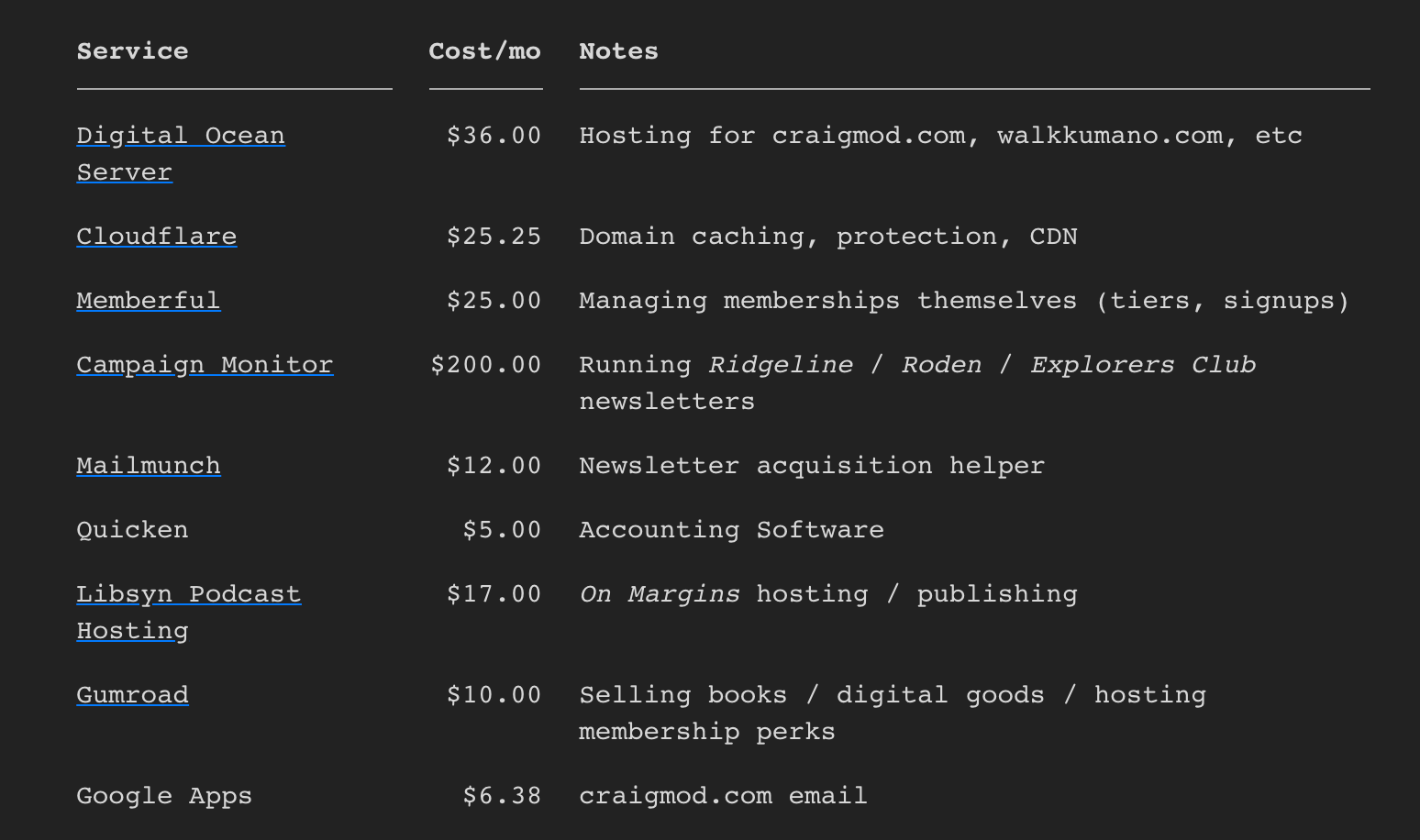
everything from hosting to member management and emails. Ghost never takes a percentage of your revenue, so the only extra fees you’d pay are for payment processing (Stripe charges 2.9% +$0.30). This makes it fairly easy to plan and budget.
Get started in a few hours or less with Ghost by signing up for a free trial and using our members guides!
Step 3: Build a business
Launching a premium newsletter needs some form of strategy behind it. Studying the examples earlier in this post exposes a few common methods for launching a paid newsletter:
Launch to an existing audience
This won’t always be applicable, but when it is it can be a great strategy to step out into the world of memberships and find out how many of your existing readers would be willing to pay. Ghost allows you to import existing subscribers from anywhere if you'd like to give existing readers immediate access.
Use content access levels to your advantage
Experimenting with free and paid content can be a great way to build an audience and drive awareness about your newsletter content.
- Run a free newsletter (less frequent, less unique content) to attract new subscribers into the top of your marketing funnel, and periodically promote upgrades to paid plans to access the best content.
- Share public previews of content on your website, and only unlock the full post with a paid subscription, using content protection.
- Publish entire articles publicly alongside premium newsletter to attract organic search traffic, or run sponsored posts to targeted groups with Facebook ads.
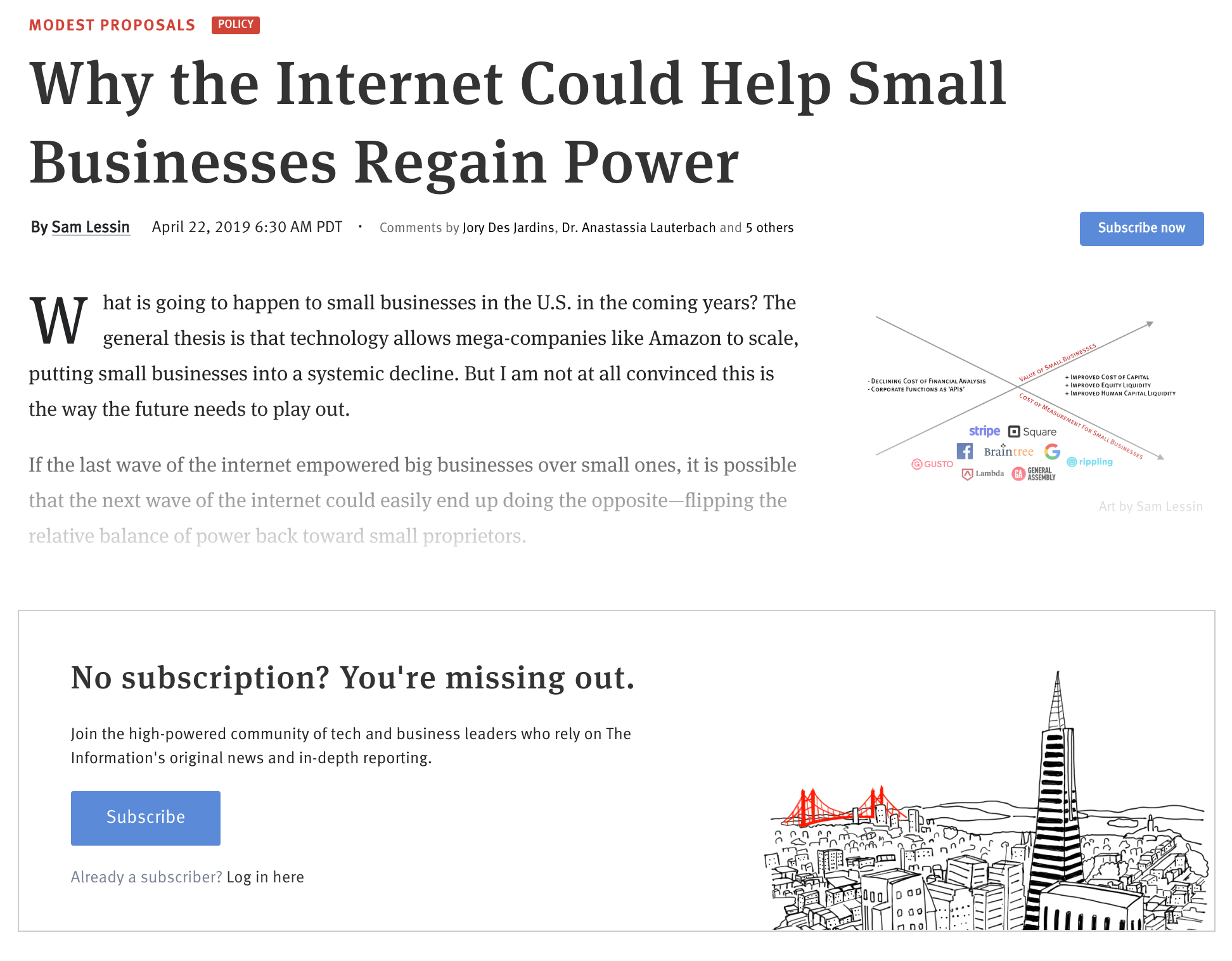
Early adopter pricing
Most new publications use the launching phase as a time to experiment with pricing strategies. It's common to start out with lower prices for your first paying subscribers (early adopters) when you're still adding content and ironing out the finer details. This is a great opportunity to test your business strategy and content in the wild.
One way to do this is to offer a limited number of memberships at a certain price, and then increase it once they have all sold out:

Make sure you’re working towards a pricing model that's sustainable for your business. Many creators undervalue their work which can lead to economically unsustainable business models.
Further reading: How to start a membership business without a huge audience
Crowdfunding campaigns
Running a crowdfunding campaign is another way to launch, which not only generates initial funding to support you in the early days, but also functions as a marketing campaign for launching. De Correspondent famously did this to launch an English-speaking version, raising $2.5 million, a lots of attention, and thousands of founding members.
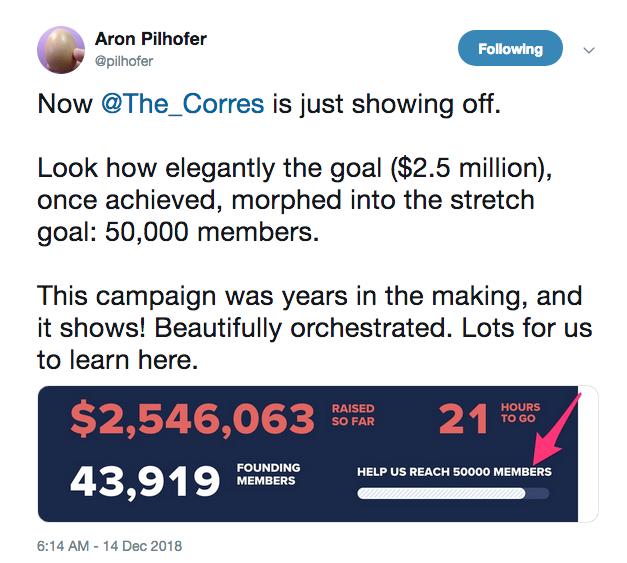
Word of mouth
No matter what your strategy is — word of mouth is always the strongest marketing channel of them all. The great thing about publishing for a specific niche is that your audience is often a group of people who talk to each other. Consider fostering word of mouth by asking your members to share your work, or even offer a referral program.
We've now learnt what successful examples of paid newsletters look like, and walked through the main 3 steps required to launch your own sustainable publishing business. Let us know what you do next by applying to join our community!
A parting note: Many publishers running paid newsletters have shared that their biggest regret is not starting sooner. Like any other type of business, it's a constant process of iteration and improvements, so don't wait around for perfection to get started.



